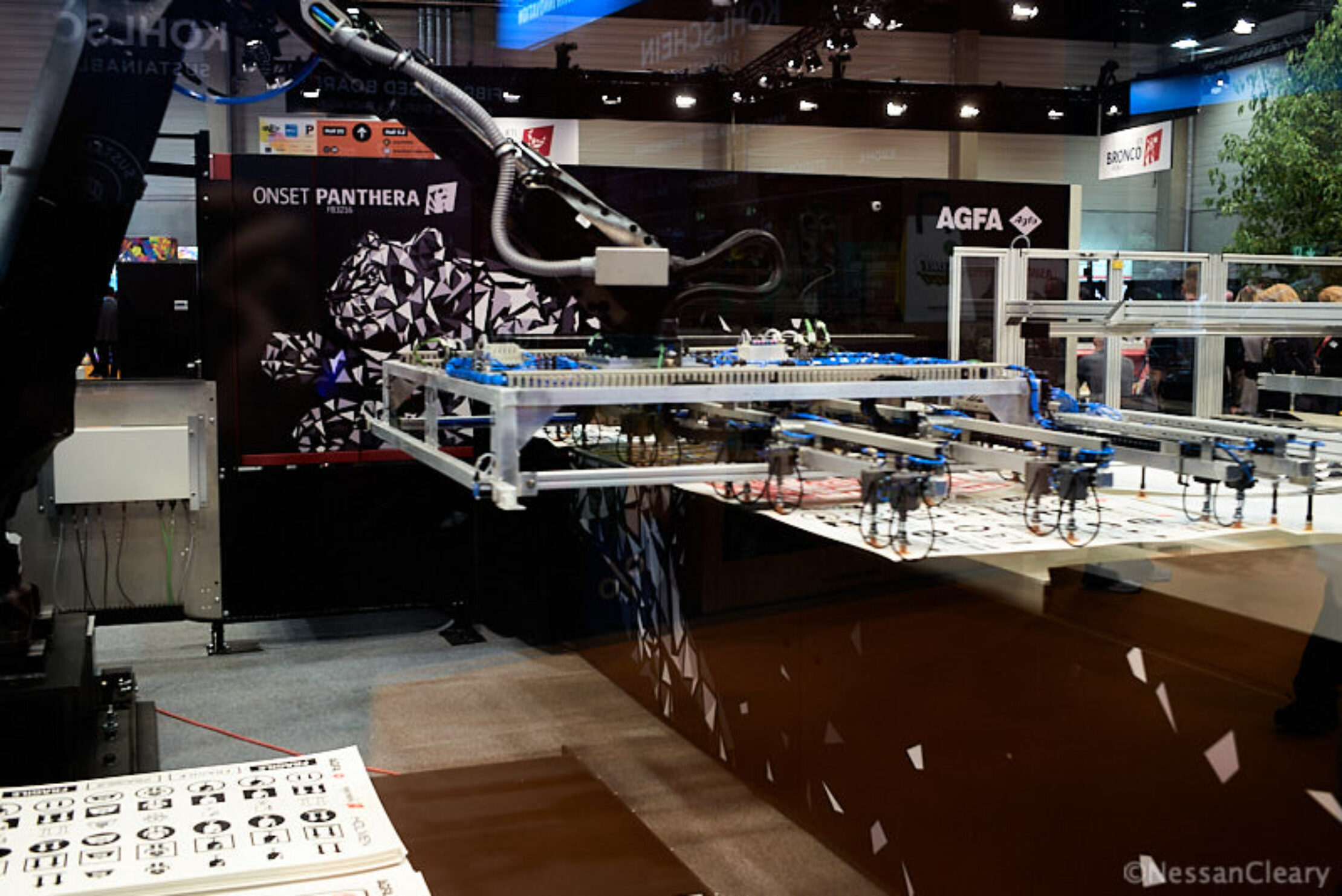
Higher volumes with the best single-pass wide format printers
Become a FESPA Member
to Continue Reading
High-volume wide format presses can boost productivity and profits.
Last month’s Fespa Global Print Expo in Berlin demonstrated the demand in the market for high-volume wide format presses. The logic behind this is fairly straightforward. Higher productivity can lead to lower costs per unit, allowing printers to offer lower prices, or achieve higher profit margins, or a combination of the two.
The savings from consolidating the work from multiple presses to a single device lie mainly in economies of scale for items such as inks and servicing, as well as savings on staff. Pushing all or most of your work through a large-volume press should also lead to a simpler workflow, which in turn makes investments in automated loading and unloading systems more attractive. Some might argue that this creates a single point of failure, but most high-volume presses are robust industrial machines with much tighter servicing contracts than with smaller presses.
There are two obvious routes to building a higher volume press, which both involve adding more printheads. Most wide format presses have the printheads on a moving shuttle that makes multiple passes left and right as the substrate moves forward. Successive passes can fill in gaps and improve resolution as well as ink density so using more heads to reduce the number of passes will lead to quicker results.
Fujifilm’s latest hybrid printer is the Acuity Ultra Hybrid Pro. ©Nessan ClearyThe alternative is simply to use a single pass with enough printheads to span the entire width of the print area. That’s fairly straightforward for commercial printing, where the page widths are typically between 520mm and 760mm but much harder for wide format, which can be up to 3,200mm.
Nonetheless several press vendors have developed single-pass printers for the wide format market. Fujifilm, for example, has developed a single-pass printer, the HS6000, which is built under contract by the Spanish company Barberán.
Fujifilm used the recent FESPA Global Print Expo to announce a new model, the HS3000, which is a simplified and smaller version of the HS6000.
These take boards up to 1.7m wide, with the HS6000 producing up to 80 linear m/m, while the HS3000 is slower at 50 linear m/m though the productivity depends heavily on the method used to feed the substrates.
Oliver Mills, Marketing Manager for Fujifilm’s HS-series printers says that there’s a lot of demand for manual feeding for short…
...